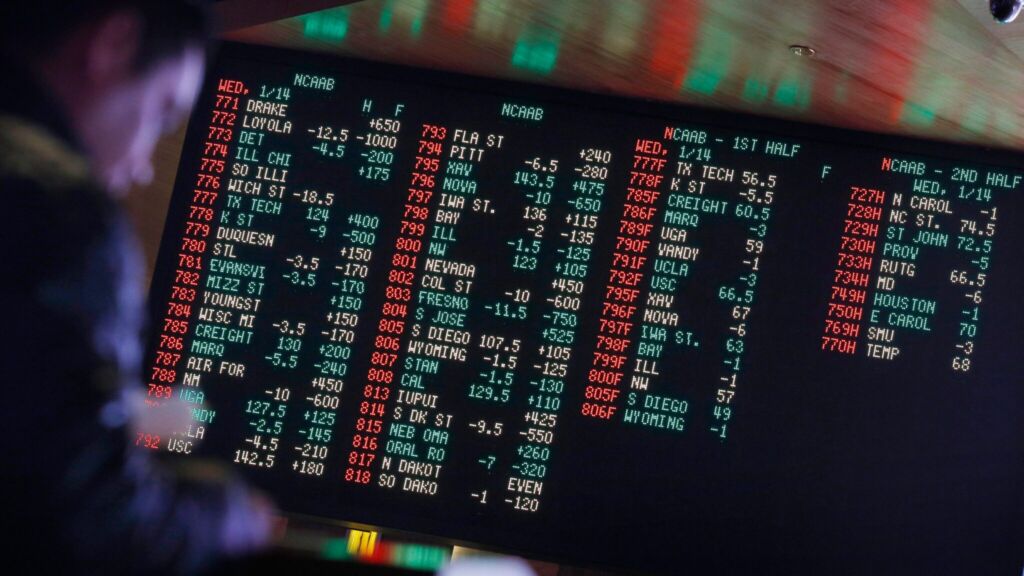In sports betting’s dynamic landscape, grasping the value in odds is a vital skill that elevates novice bettors to skilled potential winners; this comprehensive resource delves into this essential domain.
Decoding Betting Odds: Laying the Groundwork for Recognizing Value
Prior to recognizing value, comprehending the essence of betting odds is imperative. Fundamentally, odds represent a bookmaker's calculated forecast of a particular event’s likelihood, presented in a manner that allows for betting and payout computations. These numbers are methodically determined, encompassing diverse elements, and importantly, involve a margin designed for the bookmaker’s gain.
Various Odds Formats and Their Implied Probability
Odds are expressed through different formats, conveying similar probabilities in distinct manners. Common methods are fractional, decimal, and American. UK’s favored fractional odds, like 5/1, indicate potential returns relative to the stake, whereas decimal odds, such as 6.0, favored in Europe, cover the total payout. In the U.S., American odds display either required staking for a return or winnings per $100 wagered, using negative and positive figures respectively.
Crucially, from any odds format, the implied probability can be extracted: the bookmaker’s forecasted likelihood of an event. For decimal odds, it’s computed as 1 divided by the decimal figure, multiplied by 100. Thus, odds of 2.0 suggest a 50% chance. Recognizing this is pivotal in assessing bet value.
The Overround: Bookmaker’s Margin
Bookmakers operate with profit goals, using a margin known as ‘overround’ to ensure gain. This overround accumulates the implied probabilities of all possible events in a market, typically exceeding 100%, securing the bookmaker’s profit.
Understanding this margin is key since it illustrates that the odds offered aren’t pure probabilities but include adjustments for bookmaker profit. Sourcing value thus entails identifying outcomes with true probabilities higher than implied ones.
Identifying Value: Finding the Edge
Value betting rests on the possibility that bookmakers occasionally misinterpret probabilities. Spotting value involves identifying odds that surpass the true likelihood of an event, necessitating a blend of insight, investigation, and analytical acumen.
In-Depth Analysis: Beyond Basics
Achieving success in value betting transcends surface-level odds examination, requiring profound analysis inclusive of numerous aspects that might affect a sports event’s result, covering:
- Statistical Analysis: Diving into team and player performance stats is essential. This involves examining past records, recent forms, matchup history, and variables relevant to the sport. In soccer, metrics like goal attempts or possession rates matter, while in basketball, points and assists are crucial.
- Team News and Injuries: Knowledge of lineup changes, injuries, and suspensions is vital, as key player absences can impact performance markedly. Reliable news platforms and official outlets offer crucial updates pre-game.
- Contextual Elements: Beyond data, other factors play roles, like:
- Home Advantage: The influence of playing on home ground varies across sports. Examining historical records can uncover specific strengths or weaknesses.
- Motivation and Morale: Player morale, managerial shifts, and match significance influence outcomes, informed by news and press briefings.
- Weather: For outdoor sports, conditions like rain or wind can affect play styles and favor particular contestants.
- Officiating: In sports like soccer, referees can impact games with their call propensities.
A thorough analysis of these variables allows for a better grasp of actual probabilities versus bookmaker offerings.
Comparing Bookmaker Odds: Advantages of Line Shopping
Odds offered for identical events can differ across bookmakers due to distinct risk policies and target audiences. ‘Line shopping’ – the practice of checking and comparing prices with various bookies – is vital for gaining value. It ensures capturing the best price consistently by having multiple accounts.
Even subtle odds variances can compound to notable gains over time. Regularly opting for higher odds can significantly boost profitability. Platforms that compare odds streamline this task, pinpointing the best offers for any bet promptly.
Betting Exchanges: A Community-Based Betting Approach
Betting exchanges, such as Betfair or Matchbook, differ from traditional bookmakers by permitting user-to-user betting. Here, individuals can back or lay prices, participating in peer-to-peer wagering. This setup typically offers better odds due to reduced margins, as exchanges derive income from commissions on successful bets.
Betting exchanges benefit value-seekers as they offer:
- Superior Odds: Margins are lower, often leading to more favorable odds than conventional bets.
- Lay Betting: Facilitation of laying bets introduces strategic possibilities, like arbitrage.
- Market Insights: Exchange odds can reveal the collective views and tendencies of many gamblers, offering insight into market sentiment.
Advanced Value Betting Strategies
Having a grasp of odds, implied probabilities, and comprehensive fundamental analysis opens doors to more sophisticated value betting techniques.
Expected Value (EV): Quantifying Value
The concept of Expected Value (EV) quantifies a bet's potential advantage, signifying the average gain or loss expected over numerous bets at consistent odds. The EV formula is:
EV = (Winning Probability * Possible Profit) – (Losing Probability * Stake)
Or, simplified for decimal odds:
EV = (Implied Probability * Odds – 1) – (1 – Implied Probability)
When you encounter a positive expected value (EV) in betting, it typically signifies a favorable situation where the odds are skewed in your favor over time, suggesting potential profitability. Conversely, a negative EV implies that the odds are not advantageous, indicating likely losses as time progresses. An EV of zero suggests that, over time, you neither gain nor lose money, essentially breaking even.
Consider a scenario where you determine that a team has a genuine 60% chance of winning a game, yet the bookmaker provides odds that reflect only a 50% likelihood, with decimal odds set at 2.0.
EV = (0.60 * (2.0 – 1)) – (0.40 * 1) = 0.60 – 0.40 = 0.20
A positive EV of 0.20 in this context points to a promising opportunity for profit. If your assessment of probabilities holds true, each dollar you wager has the expectation of yielding an average return of 20 cents in the long haul.
To compute EV, one must first estimate the genuine probability of a potential outcome, which is often a challenging ordeal. Nonetheless, grasping the EV concept remains a pivotal step in performing value betting efficiently.
Understanding the Kelly Criterion: Allocating Stakes for Value Bets
The Kelly Criterion offers a mathematical approach for determining the optimal amount to wager on a value bet, aspiring to enhance long-term score growth while minimizing bankruptcy risks. It advocates for betting a part of your bankroll proportionate to the calculated edge (EV) and associated odds.
The Kelly Criterion formula is:
Kelly % = Edge / Odds
Here, 'Edge' is essentially your calculated Expected Value (as a decimal, such as an EV of 0.20 meaning an edge of 0.20), and ‘Odds’ refers to the decimal odds subtracted by one, representing potential gains relative to the bet. Utilizing the previous example with even decimal odds of 2.0 and a 0.20 edge:
Kelly % = 0.20 / (2.0 – 1) = 0.20 / 1 = 0.20 or 20%
Guided by the Kelly Criterion, one might choose to commit 20% of their total gambling bankroll to this opportunity. It's worth considering that pursuing the full Kelly strategy can seem rather aggressive, encouraging numerous gamblers to follow a fractional Kelly path, such as half or quarter Kelly, to mitigate uncertainties and potential volatility.
Exploring Risk-Free Earnings through Arbitrage Betting
Arbitrage betting, commonly referred to as ‘arbing,’ revolves around transforming variances in betting odds from various providers into certainties, promising profits irrespective of the outcome. This approach becomes feasible when multiple wagers cover all likely results, with each bet positioned to ensure profit.
Imagine a tennis match with two opponents, where Bookmaker A offers 2.1 odds for Player 1, and Bookmaker B extends similar odds for Player 2. By placing one bet on Player 1 with Bookmaker A and another on Player 2 with Bookmaker B, an arbitrage situation materializes. Suppose you stake $100 on both players; your total wager becomes $200. Should Player 1 emerge victorious, you earn $210, faced with a $100 loss on the other bet, leaving you with a $10 gain. If Player 2 wins, the math remains the same. Thus, you secure a guaranteed return of 5% on your total investment.
Arbitrage opportunities are rare and brief as bookmakers rapidly alter their odds. Successfully capturing these opportunities demands speed, access to various betting platforms, and sometimes software tools dedicated to identifying valuable situations. Although theoretically without risk, real-world complications such as betting limits and mistakes occasionally present challenges.
Risks and Responsible Gambling
Despite its strategic nature, value betting retains its essence in gambling. Acknowledging the associated risks and engaging in responsible betting conduct is vital.
Gamble Wisely: Effective Bankroll Management
Skillful bankroll management is crucial for any bettor, particularly those pursing value bets. This involves:
- Establishing a Budget: Deciding on the precise sums you'll responsibly risk in betting, ensuring this is an amount you can afford to lose without incurring financial difficulty.
- Determining Stake Sizes: Opting for stakes that suit your available bankroll. Even as a value bettor, experiencing losses in the short term due to variance is quite normal. Conservative staking, such as using fractional Kelly models or staking a small percentage like 1-2% of your bankroll per wager, can safeguard you during losing streaks.
- Documenting Bets: Consistently record detailed information about each bet placed, including stakes, odds, results, and EV evaluations. This data is essential for evaluating your performance, identifying areas of strength or improvement in your gambling strategy, and evaluating your overall returns.
Recognizing Problem Gambling
Recognizing potential signs of gambling issues and maintaining a responsible approach to gambling is vital. Some warning signs include:
- Attempting to recover losses by escalating the size of bets.
- Wagering more than your budget allows, leading to financial strain.
- Spending excessive amounts of time and resources on gambling.
- Neglecting life responsibilities due to gambling behaviors.
- Lying about gambling activities.
If such symptoms become evident in yourself or someone you care about, seeking assistance is imperative. There are resources available designed to aid those coping with gambling issues.
Final Thoughts: Taking an Informed Approach with Value Betting
Identifying value within betting odds requests a skillful blend of awareness, patience, and commitment to constant improvement. It involves moving beyond traditional bets or impulsive decisions, adopting a structured and analytical stance. By mastering odds interpretation, conducting thorough analyses, contrasting prices, and utilizing strategic methods such as EV calculations, bettors can effectively amplify their sustained success chances. Nonetheless, it’s essential to remember that gambling remains inherently risky, necessitating constant adherence to responsible gaming habits. The goal remains clear: making smarter bets, conscious of perpetual uncertainty, and inherently avoiding expectations of infallibility or immediate wealth gains.
External Resources:



